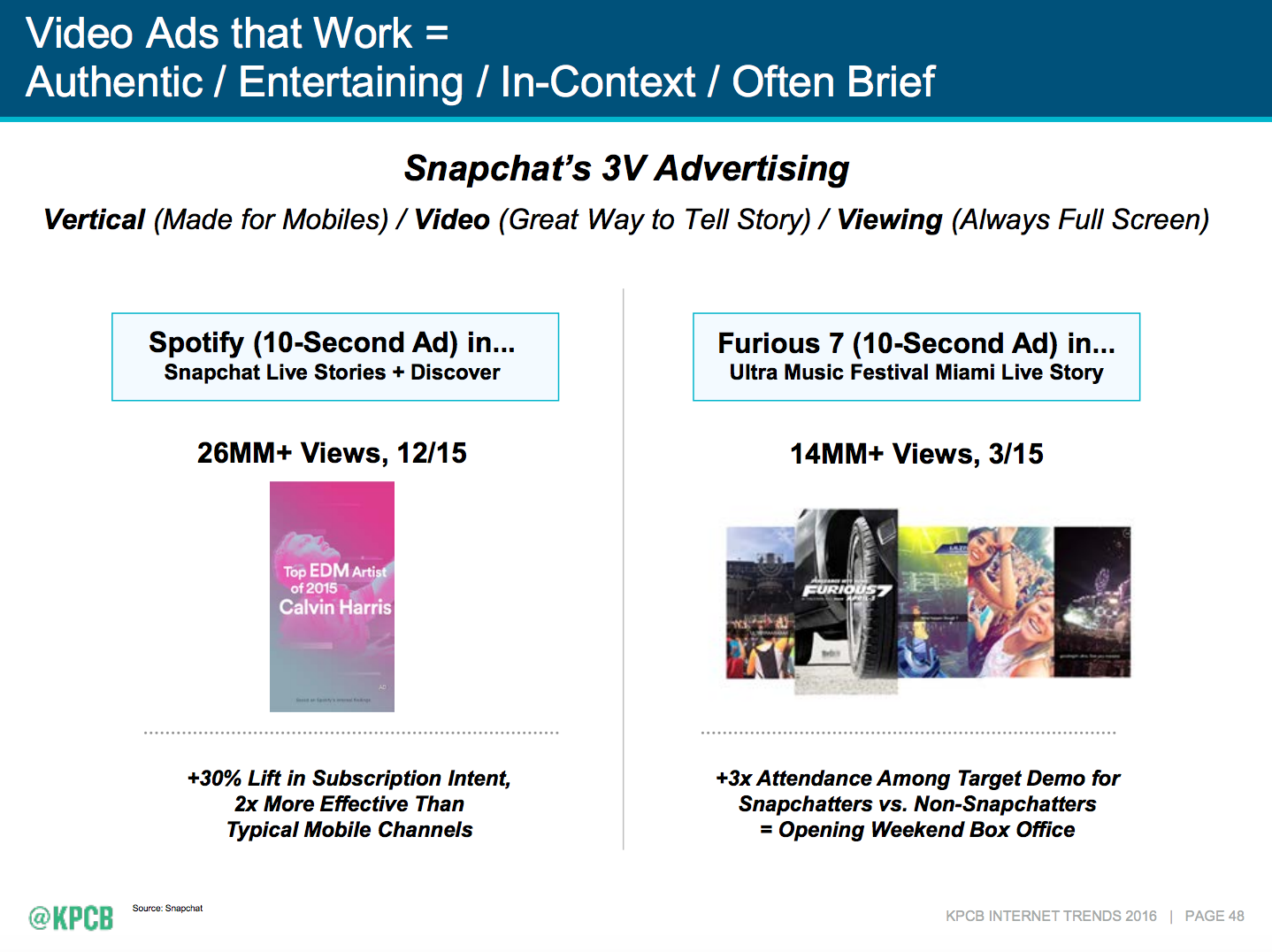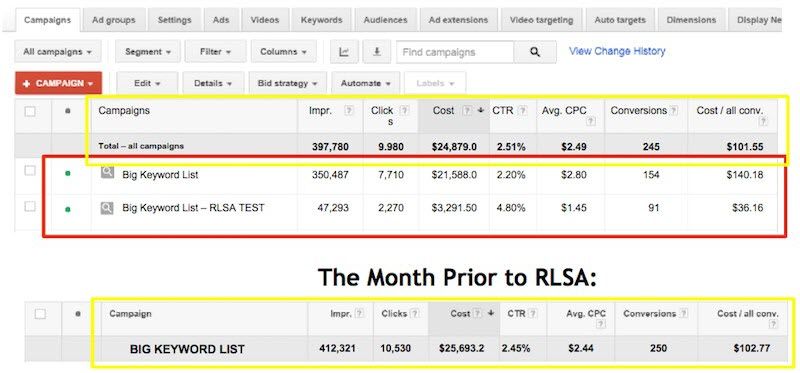Mary Meeker published her Internet Trends of 2016 last week and among others, there were very interesting stats regarding the increase of visual content and most importantly, how this affects communication, marketing, broadcasting and ecommerce.
There is a new generation coming up after millennials, the so-called Generation Z, which seems to be even more digital aware, comparing to the previous ones, evolving the idea of communication and content consumption, preferring visual content over written text.

As millennials are growing older, trends also focus on the next generation and it's interesting to see how visual content will affect their digital habits over the next years.
Visual social networks are more engaging
It's not a coincidence that the most popular social networks rely on visual content, with the right type of content affecting users' engagement. Facebook is the clear winner both in popularity and engagement among millennials, with Snapchat and Instagram following it.
Snapchat seems to be the second most engaging social platform, while Instagram seems to appeal to a bigger target group.

Communication through visual content, whether it's an image or a video, has been very popular and it forms a new method of interaction among users, as it's quick, direct and more appealing.
However, visual content cannot guarantee the success of a social platform, as engagement can be challenging, and Vine's (decreasing) engagement is the proof of it.
The evolution of video viewing
Video viewing has changed over the years, starting with the traditional live content through television to on-demand video with DVR and streaming, heading then to semi-live content with Snapchat Stories and experiencing today real live content, as more social networks embrace the power of live broadcasting.

Timing, personalisation and relevance are more important than ever, while users appreciate the ability to broadcast their own content through their favourite social networks, feeling part of a community, contributing with their content to a relevant story.
Social media turns to video content
The rise of visual content has been affected by the growing popularity of social media and the latest stats from Facebook and Snapchat indicate the increase of video views on both social networks.
Native videos in social media seem to be preferred both by users and publishers and this led to an increase in video views during the past year.
Video advertising on Facebook is now offering many creative options for brands and this makes it very appealing, while users enjoy consuming short and engaging videos. Buzzfeed's Tasty and its successful video content proves how effective a short video may be.

Snapchat's success with visual content
Snapchat has been one of the most engaging platforms lately and visual content contributed to its success.
The idea of splitting the use of content to Stories, Live and Discover, with each one serving a different goal, allowed Snapchat to guide users on the way they can use visual content, always in a casual and visually appealing way, full of colours and filters.

This was very exciting for early influencers, skyrocketing the popularity of the platform, while brands recently realised how this new type of vertical content may be used for the promotion of their products and the highly desired conversion.
Snapchat's advertising plan relies on 3Vs, vertical, video, and viewing and it's the combination of these that creates effective ads, measuring both the number of views, but also the completion rate of each video.

What's more, the popularity of Snapchat's filters helped brands use their creativity and produce their own branded filters to promote their products and users seemed to love this idea.
Up to now, many brands have tried to create their own branded filters, with Taco Bell's being among the best uses that we've recently seen.

The case of live broadcasting
Live broadcasting has been in high demand lately and this can also be attributed to Periscope's success, turning all the big social networks to the trend of live videos.
It's not just about promoting live broadcasting, it's about turning users into broadcasters, creating their own live videos that lead to an impressive amount of available video content worldwide in real time.
Facebook, Twitter, Snapchat have significantly benefited from live broadcasting, with each one of them promoting it accordingly.
Facebook for example seems willing to fill our news feeds with live videos, which seems very useful for brands that wants to use live content for their marketing strategy.

Twitter on the other hand, decided to acquire Periscope, hoping to mix live broadcasting with real-time hashtags, in order to create a powerful suite of tools for live streaming and popular events all over the world.
What's more, Twitter has sealed a collaboration with NFL to live stream live video, in another attempt to change digital broadcasting.
As for Snapchat, the idea of Live Stories blends user-generated content with a professional curator, in order to showcase the best local and global stories. This helps users feel included, while the platform may showcase a great amount of content.
Image growth remains strong
Despite the rise of video content, image growth remains strong, with Facebook-owned platforms taking the lead. Snapchat seems to be the only big competitor for Facebook and they both encourage users to upload new photos with their own unique incentives.
As for the brands' point of view, images are still very effective and that's why the are an integral part of their social strategy, especially when there's no time, or budget, to create a video.

How visual content leads to purchase conversion
Pinterest is the best example for brands on how visual content can increase purchase intent, as it is both engaging and effective.
Pinterest users love browsing for their favourite content, but they are also prepared to buy what they like, which brings out a new type of social platform that is not just about raising awareness about a brand, but also about motivating consumers to proceed to a purchase.
In fact, 55% of Pinterest users seem to use the platform to find and shop products, leaving Facebook and Instagram way behind with just 12% of purchase intent.

Pinterest is not always considered the first option for brands looking to increase their social impact and increase sales, but the stats above indicate its success in driving sales, having an aware audience of online consumers who browse the site for current or future purchases.
It's the power of visual content, the large size of the images, the popularity of infographics and the various types of pins that enhance the shopping experience that make Pinterest so appealing, reminding brands not to overlook it when trying to lead traffic to their site and increase sales.

Although Pinterest may serve as the right example on how to use a platform to increase sales, most of the popular social networks can be used by a brand to increase sales, provided that the content is optimised in order to convey the right message.
The future of visual content
There's no indication that visual content will be reduced any time soon. In fact, we are expecting an even greater increase, with Cisco predicting that by 2019, online video will be responsible for four-fifths of global internet traffic.
There's a psychological trigger on why users find visual content appealing and its impact is also present in communication, creating a new form of self-expression. From the first type-based emojis up to the latest Snapchat filters, visual content was always fascinating as an additional form of communication, although it might even replace written texts in many occasions.

Users love communicating with visual content through instant messaging, with emojis also being used by brands nowadays as an additional element of a casual tone.
Thus, it's time for brands to discover all the new forms of visual content, in order to use them as part of their content marketing strategy, combining authenticity with a modern appeal, enhancing their message in the most appropriate way.

















 The new, more eye-catching Snapchat Discover
The new, more eye-catching Snapchat Discover




























 Designing for mobile increasingly means taking a mobile-first approach to user experience and content, rather than simply adapting to mobile.
Designing for mobile increasingly means taking a mobile-first approach to user experience and content, rather than simply adapting to mobile.
 Small, hyperlocal websites can wield a lot of local clout if you manage to gain links from them
Small, hyperlocal websites can wield a lot of local clout if you manage to gain links from them Image via
Image via 